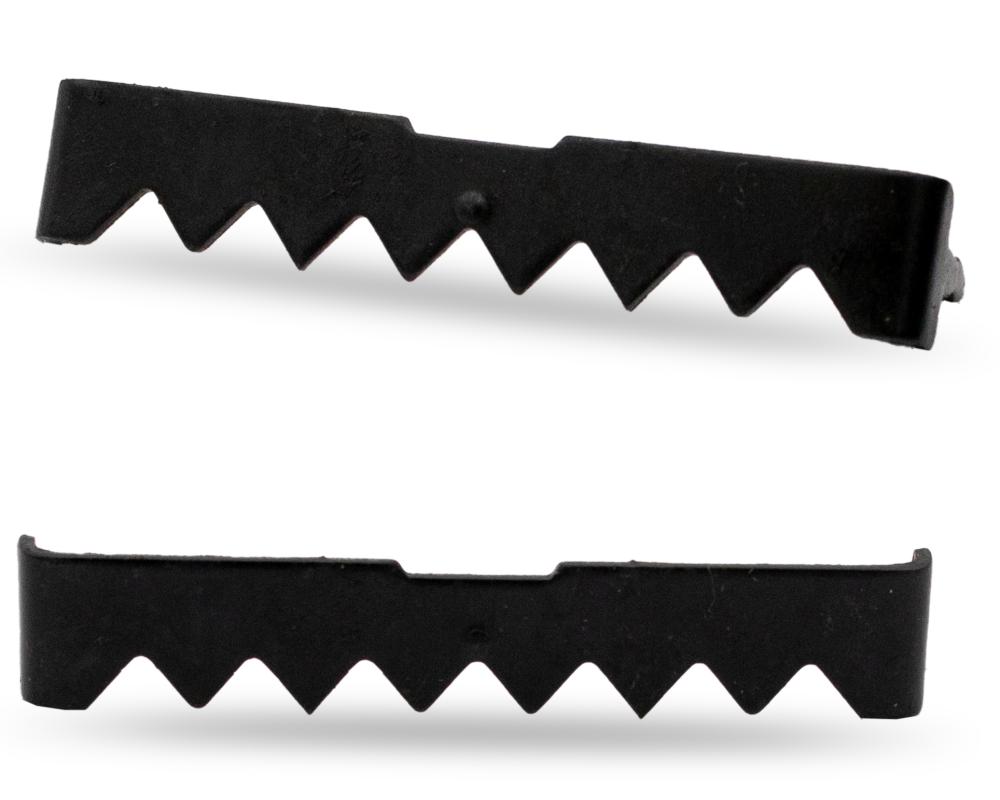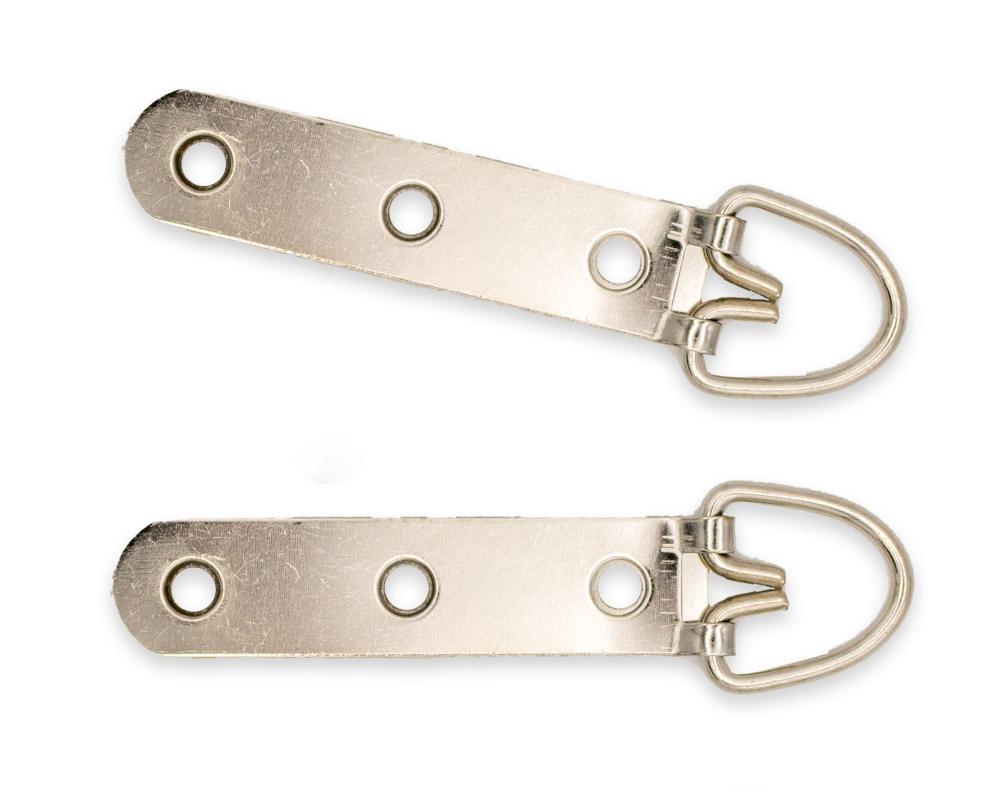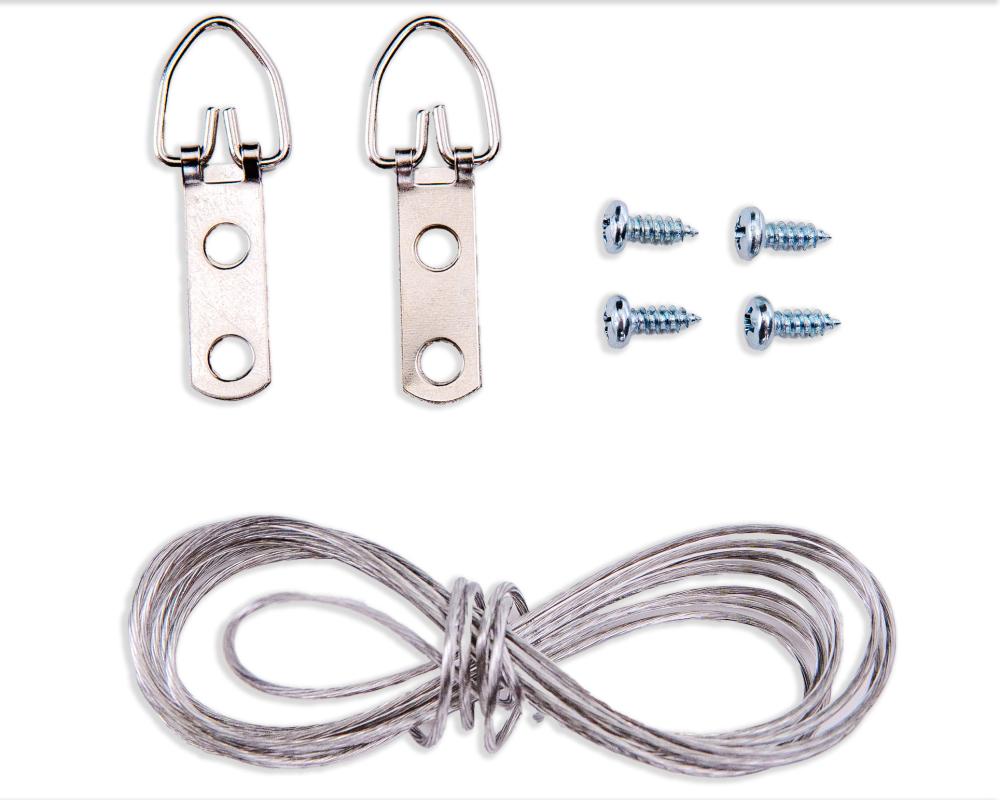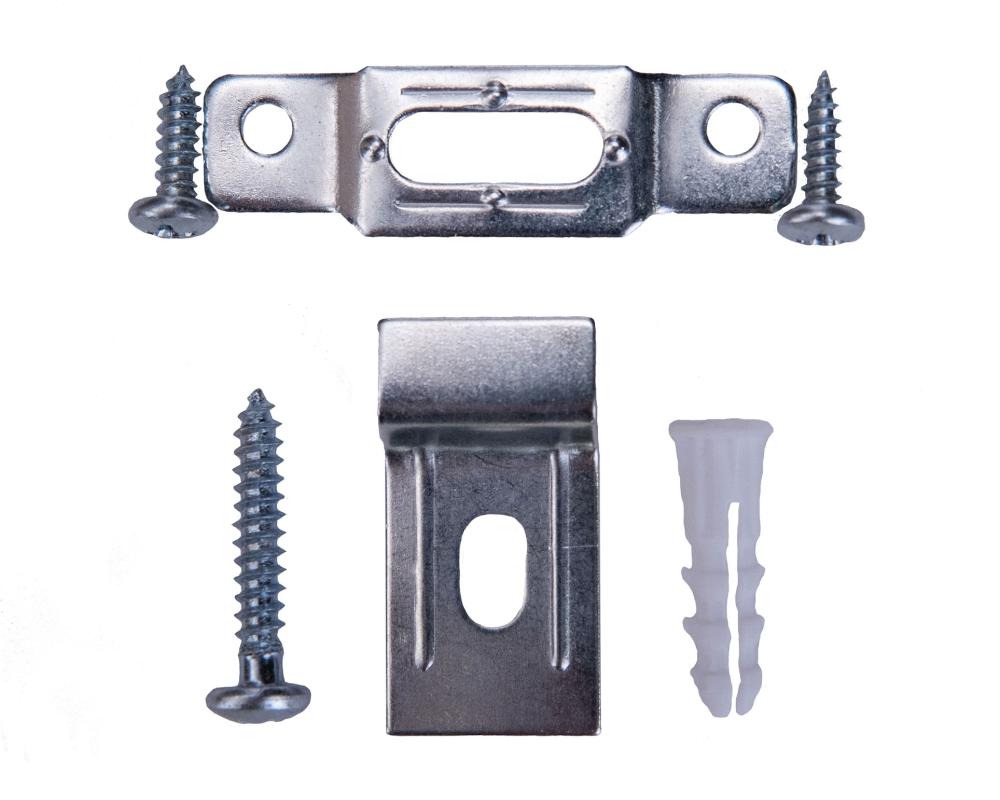
This comprehensive guide covers everything you need to know about picture frame hanging hardware, including sawtooth hangers, D-rings, wire, and security hardware. Whether you're hanging small, lightweight frames or larger, heavier artwork, this post explains the best hardware options for each situation. Learn how to securely install your frames, keep them level, and ensure they stay in place with our expert tips on using the right hardware for your home or gallery walls. Perfect for anyone looking to master the art of hanging frames with ease!
At FrameWorthy.com, we’re passionate about making custom framing accessible and easy for everyone. Whether you’re hanging a lightweight family photo or a large, cherished art piece, the right hanging hardware is essential to ensure your frame is securely and beautifully displayed. With so many options available, choosing the best hardware for your frame can feel overwhelming. That’s where our expert guidance comes in. In this blog post, we’ll walk you through the most common types of picture frame hanging hardware—Sawtooth Hangers, D-Rings, Wire, and Security Hardware—so you can confidently hang your frames like a pro.


1. Sawtooth Hangers: Best for Small, Lightweight Frames
Sawtooth hangers are a perfect choice for small, lightweight frames, such as those displaying family photos, certificates, or smaller art pieces. They’re a popular option due to their simplicity, effectiveness, and ease of installation, allowing you to hang your frames quickly without the need for heavy-duty tools.
Design and Functionality
Named for their serrated, tooth-like design, sawtooth hangers feature small teeth that "bite" into a nail or hook on the wall, keeping the frame securely in place. Their lightweight construction and slim profile ensure the hanger remains discreet, which is perfect for smaller frames that don’t require bulky hardware. The teeth on the hanger help to balance the frame, ensuring that it stays level without constant adjustments.
When to Use Sawtooth Hangers
These hangers are best suited for frames that weigh up to 10 pounds, making them ideal for lightweight wood, metal, or acrylic frames. They are perfect for casual home décor like family photo collages, certificates, or smaller art prints. Sawtooth hangers work well in environments where you may need to frequently reposition or update your wall art, as they’re easy to hang and remove.
How to Install Sawtooth Hangers
Installing sawtooth hangers is incredibly straightforward:
- Measure the Frame: Start by measuring the top of your frame to find the center point. Mark this spot with a pencil, as it will guide you in placing the hanger in the middle.
- Position the Hanger: Place the sawtooth hanger so the teeth face downward, ensuring the hanger is aligned with the center mark.
- Attach the Hanger: Lightly hammer the ends of the sawtooth hanger into the back of the frame. Some frames may come with pre-drilled holes for screws, but often, the hanger simply taps into the frame’s surface.
- Hang the Frame: Once the hanger is in place, position a nail or hook on your wall and hang the frame from the sawtooth hanger.
Sawtooth hangers offer a no-fuss solution for creating a neat and balanced display, making them one of the most popular choices for lightweight frames. Whether you're updating your home office with certificates or creating a gallery wall of family photos, sawtooth hangers provide a reliable and easy-to-install option.

2. D-Ring Hangers: Versatile for All Frame Sizes
D-ring hangers are a highly versatile and reliable solution for hanging picture frames of all sizes, from small art prints to large, heavy frames and mirrors. These sturdy hangers are designed to provide enhanced security, making them ideal for frames that need extra support. D-rings are a popular choice among professional framers and DIY enthusiasts alike because they offer flexibility and durability for a variety of display needs.
Design and Durability
The design of D-rings is simple yet effective. They feature a metal loop (the “D” shape) attached to a flat metal plate with one or more screw holes. The number of screw holes varies depending on the size of the D-ring, with larger ones typically having multiple holes for added strength. This design helps distribute the frame’s weight more evenly across the back, reducing the chances of hardware failure due to screw tear-out, especially for heavier frames.
When to Use D-Ring Hangers
D-rings are suitable for frames of all sizes, making them a versatile choice for everything from lightweight artwork to large, heavy mirrors and shadow boxes. For smaller frames, D-rings can be used without wire by attaching them directly to the frame and hanging the ring over a nail or hook. For larger frames, D-rings are often used with hanging wire, providing more stability and flexibility in positioning the frame on the wall. This makes D-rings perfect for artwork, gallery displays, and mirrors that require additional support and precision in hanging.
How to Use D-Rings with or Without Wire
- Without Wire: For smaller frames, you can attach D-rings directly to the back of the frame and hang them over nails or hooks. This method provides a minimalist look, as the frame will sit close to the wall and won’t require additional hardware like wire. Simply attach the D-rings at equal distances on either side of the frame, ensuring they are level, and hang the frame directly onto your wall hooks.
- With Wire: For larger or heavier frames, D-rings are commonly paired with hanging wire to offer greater support. This method allows the weight of the frame to be more evenly distributed and provides flexibility in positioning. To use D-rings with wire, follow these steps:
- Measure and Mark: Measure one-third down from the top of each side of the frame and mark the spot where the D-rings will be attached.
- Attach D-Rings: Screw the D-rings into the back of the frame at the marked spots, ensuring the ring part is facing upwards for wire installation.
- String the Wire: Cut a length of wire and thread it through one of the D-rings, leaving a few inches of slack. Loop the wire through the D-ring twice and wrap it around itself to secure. Stretch the wire across the back of the frame and repeat the process on the other side, leaving a small amount of slack to allow the frame to hang comfortably.
Advantages of D-Ring Hangers
- Enhanced Security: The multiple screw holes found in D-rings help distribute the frame’s weight more evenly, providing extra support for heavier items. This reduces the risk of the screws tearing out of the frame, which is especially important for large or valuable artwork.
- Flexible Hanging Options: Whether you prefer to hang your frame flat against the wall or use wire for more flexibility, D-rings offer both options. This makes them perfect for a wide variety of frame sizes and styles, including gallery walls, family portraits, and even large mirrors.
- Professional Look: D-rings are often used by professional framers because they allow frames to hang more flush against the wall, giving a clean and polished appearance.
D-ring hangers are an essential piece of hardware for anyone looking to create a secure and professional display for their frames. Whether you're hanging a lightweight piece or a heavier frame, D-rings offer the versatility, strength, and durability to keep your artwork safely and beautifully displayed.

3. Wire Hanging: Perfect for Large Frames
Using wire to hang your frames is one of the most popular and practical methods for securing larger, heavier frames. Whether you're displaying a big piece of art, a large mirror, or a shadow box, wire hanging offers a reliable solution that provides both strength and flexibility. It's especially useful when paired with D-rings, creating a sturdy support system that makes adjusting the frame's position on the wall easier.
Why Choose Wire Hanging for Large Frames?
Wire hanging is ideal for large frames because it evenly distributes the weight across multiple points, reducing strain on the frame and the wall. The flexibility of wire also allows for slight adjustments, making it easier to achieve a perfectly level display. Additionally, wire hanging systems can accommodate various wall anchors, hooks, or nails, ensuring that the frame remains secure regardless of its size or weight.
Advantages of Wire Hanging for Large Frames
- Even Weight Distribution: When hanging a large or heavy frame, it's crucial to prevent any single point from bearing all the weight. The wire, when attached to D-rings on either side of the frame, spreads the load across a wider surface area, reducing the risk of hardware failure or damage to the frame.
- Adjustability: One of the biggest advantages of wire hanging is its adjustability. With wire, you can easily make minor shifts to ensure the frame is level or centered, especially useful when hanging large frames that require precise positioning.
- Sleek Appearance: Wire hanging allows your frame to sit closer to the wall, giving a clean, polished look. This is particularly important for art galleries, home decor setups, or professional spaces where presentation matters.
How to Install Wire for Hanging Large Frames
Using wire for hanging large frames is a straightforward process that provides both stability and ease of use. Here's how to install wire on your large frame:
- Measure for D-Ring Placement
Begin by measuring one-third of the way down from the top of the frame on each side. This ensures the weight is distributed properly and gives the frame enough support. Use a pencil or marker to make small marks on the back of the frame where the D-rings will be installed. - Attach the D-Rings
Install the D-rings at the marked points, ensuring that they are facing upward so the wire can be threaded through. The D-rings should be aligned and evenly spaced on both sides of the frame. - Prepare and Cut the Wire
Measure a length of picture-hanging wire that is roughly 1.5 to 2 times the width of the frame. This allows for enough slack and excess wire to secure the ends tightly. Cut the wire using wire cutters. - Thread the Wire Through the D-Rings
Starting at one D-ring, thread the wire through the loop, leaving a few inches of excess wire for wrapping. Loop the wire through the D-ring twice for added security, then wrap the excess wire tightly around itself several times to ensure it won’t slip. - Create Slack in the Wire
Stretch the wire across the back of the frame and thread it through the second D-ring. Before securing the second side, create a small amount of slack in the wire—just enough to allow the wire to hang slightly below the top of the frame when pulled taut. This slack helps with adjusting the frame on the wall once it's hung. Secure the second side by looping the wire twice through the D-ring and wrapping the excess wire as you did on the first side. - Check the Tension and Stability
Once both sides are secured, give the wire a slight tug to ensure that it feels taut but not too tight. The frame should be supported evenly by the wire and D-rings, with the wire maintaining enough slack for easy adjustments when hung on the wall.
Tips for a Secure Wire Hanging
- Weight Rating: Be sure to select hanging wire that is rated to support the weight of your frame. Wires come in various gauges, with thicker wires offering higher weight capacities.
- Use the Right Hooks: Choose wall hooks, nails, or anchors that are suitable for the weight of your frame. If you're unsure, picture hooks rated for heavy frames or professional-grade hanging systems can offer added peace of mind.
- Double Check for Level: Once the wire is installed and the frame is hung, use a level to ensure that the frame is perfectly horizontal. Adjustments are easy with wire hanging—just lift the frame slightly to one side or the other until it's level.
Wire Hanging for Various Frame Types
Wire hanging isn’t just for traditional picture frames; it's also perfect for other types of large or heavy items like mirrors, shadow boxes, and even canvas frames. This versatility makes it a go-to option for many different styles of decor and displays.
By using wire for hanging your large frames, you get a strong, dependable, and adjustable hanging solution that keeps your artwork or photos securely in place while offering a polished, professional look. Whether you’re hanging a statement piece in your living room or showcasing a gallery wall, wire hanging ensures your frames stay put and look great.

4. Security Hardware: Locking Your Frame in Place
For public spaces, galleries, or homes where security is a priority, security hardware provides the ultimate solution for protecting your framed artwork or photos. This specialized hardware is designed to ensure that frames stay securely attached to the wall, preventing accidental dislodging, theft, or tampering. Whether you’re hanging valuable art in a gallery or a cherished piece in a high-traffic area of your home, security hardware offers peace of mind and protection.
Why Use Security Hardware?
Security hardware is essential in environments where frames are exposed to potential risks, such as public areas, schools, offices, or homes with active children or pets. In these settings, frames may be bumped, jostled, or, in some cases, targeted for theft. By locking the frame directly to the wall, security hardware ensures it stays fixed in place, minimizing the risk of damage or removal.
This hardware is also widely used in galleries and museums, where the safety of high-value artwork is paramount. In these scenarios, security hardware plays a crucial role in keeping priceless pieces safely mounted, while still allowing for easy removal by authorized personnel using special tools.
Types of Security Hardware
There are several types of security hardware to choose from, depending on the level of security needed and the type of frame being used:
- Security Hangers with Locking Mechanisms:
These hangers come with locking brackets or screws that secure the frame to the wall. The frame cannot be removed without using a specific tool, making them an excellent deterrent against theft or tampering. This system is ideal for valuable artwork, particularly in public or gallery spaces where unauthorized removal could be a concern. - Tamper-Proof Screws:
Security screws are designed with unique heads that require a special screwdriver for installation and removal. Once in place, these screws make it extremely difficult to remove the frame without the correct tool. This is a great option for securing frames in schools, hospitals, or other public institutions where safety and stability are priorities. - Anti-Tilt Brackets:
Anti-tilt hardware is designed to keep frames securely mounted, even if they are bumped or shaken. These brackets ensure that frames stay level and don’t shift on the wall, which is particularly useful in high-traffic areas like hallways or waiting rooms. - Flush Mount Security Hardware:
Flush mounts lock the frame tightly against the wall, leaving no space for it to be pulled or shifted. This option is commonly used in museums or galleries where the art is displayed with minimal gaps and a clean, modern aesthetic.
Benefits of Using Security Hardware
- Enhanced Protection: Security hardware helps protect your framed artwork from being knocked off the wall, tampered with, or stolen. This is especially important for high-value or sentimental pieces.
- Long-Term Durability: Frames installed with security hardware are less likely to be damaged over time. By securing the frame tightly to the wall, you reduce the risk of wear and tear caused by frequent handling or movement.
- Discreet and Professional Appearance: Despite offering robust security, many types of security hardware are designed to be discreet, ensuring that the aesthetic of your frame and artwork is not compromised. Visitors won’t notice the hardware, but your artwork will remain firmly in place.
- Peace of Mind: Knowing that your artwork is securely mounted gives you peace of mind, whether you’re displaying it in a busy public area or in your home. You can enjoy your art without worrying about accidents or theft.
How to Install Security Hardware
Installing security hardware requires a few simple tools and steps, but it’s important to follow the instructions carefully to ensure maximum protection.
- Prepare the Frame and Wall:
Start by marking the desired position on the wall where you want the frame to hang. Ensure the wall can support the weight of the frame, especially for heavier pieces, and use appropriate anchors if needed. - Attach the Security Hardware to the Frame:
Depending on the type of hardware, you may need to screw brackets or mounts onto the back of the frame. Be sure to follow the manufacturer’s instructions, ensuring that everything is securely fastened. - Secure the Frame to the Wall:
After attaching the hardware to the frame, align it with the pre-drilled holes in the wall and lock it into place. If you’re using a locking mechanism, make sure to engage it fully to prevent unauthorized removal. - Test for Stability:
Once installed, gently test the frame to ensure it’s stable and securely attached. The frame should not wobble or shift when touched.
When to Use Security Hardware
- Galleries and Museums: Displaying valuable or historic artwork often requires added security measures, making security hardware a must.
- Public Spaces: In high-traffic areas like offices, schools, and hospitals, security hardware helps prevent accidental damage and ensures frames stay firmly in place.
- High-Value or Sentimental Pieces: Even in homes, using security hardware for irreplaceable family photos or expensive art can offer added peace of mind.
- Children or Pet-Friendly Homes: In homes where kids or pets might accidentally bump into frames, security hardware can prevent them from falling and getting damaged.
Security hardware is a smart investment for anyone looking to protect their framed artwork, whether in public spaces or at home. By securely locking your frame to the wall, you not only safeguard it from theft or tampering but also ensure it remains beautifully displayed for years to come. At FrameWorthy, we offer a variety of security hardware solutions to suit any frame, providing the protection and peace of mind you need for your most valuable pieces.
Choosing the Right Hardware for Your Frame
Selecting the right hanging hardware is essential for ensuring that your artwork or photos are safely and securely displayed. The hardware you choose depends on factors like the size, weight, and value of the frame, as well as the environment where it will be hung.
- For small, lightweight frames, sawtooth hangers are an ideal choice. They are easy to install, balance the frame evenly on the wall, and are perfect for photos, certificates, and smaller pieces of art. Sawtooth hangers work well with frames that are lighter and less likely to shift when hung.
- D-rings offer extra security and versatility for a wide range of frames, whether small or large. D-rings can be used with or without wire, depending on your preference and the frame’s design. For heavier frames, D-rings provide excellent support by distributing the frame’s weight evenly, making them a reliable choice for frames of all sizes.
- Wire hanging is the go-to solution for heavier frames, providing stability while allowing for easy adjustments when leveling your artwork. When paired with D-rings, wire hanging systems create a strong and flexible setup, ideal for larger art pieces, mirrors, or shadow boxes. The wire allows for subtle shifts in placement, ensuring that your frame hangs perfectly straight, even on uneven surfaces.
- For high-value artwork or frames in public or high-traffic areas, security hardware is the best option. This hardware locks your frame directly to the wall, preventing it from being knocked off or easily removed. Security hardware is perfect for galleries, museums, schools, or homes where protecting valuable artwork or family heirlooms is a priority.
At FrameWorthy, we make it easy to select the right hardware for your custom framing needs. We provide all the necessary hanging hardware with each custom frame order, so you don’t have to worry about finding the right components. Our team of framing experts is always available to help you choose the best hardware for your specific project, ensuring that your frames are both beautifully displayed and securely mounted. Whether you’re framing family photos, art prints, or treasured mementos, our goal is to make custom framing accessible and enjoyable for everyone.
Need Help with Installation?
If you have any questions about installing your frame’s hanging hardware or need assistance with hanging your frames, don’t hesitate to reach out! Contact our framing experts at hello@frameworthy.com, and we’ll be happy to assist you every step of the way.
At FrameWorthy.com, we believe that custom framing should be simple, secure, and stunning!

The FrameWorthy.com Team is made up of expert framers with years of experience in the art of custom framing. Passionate about preserving your cherished memories, artwork, and keepsakes, their valuable insights, tips, and tricks come from a deep understanding of framing techniques, materials, and design. Whether you're looking for the perfect frame style, matting options, or advice on protecting your items, the FrameWorthy team is dedicated to making custom framing easy and accessible. Trust their expertise to guide you in creating beautiful, lasting displays for your home, office, or gallery.





